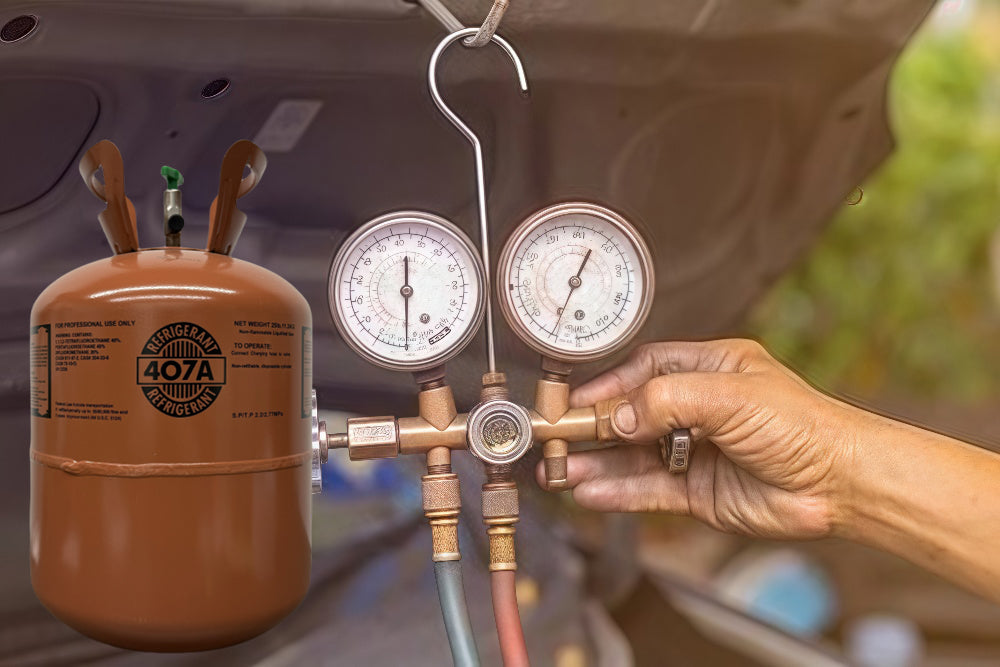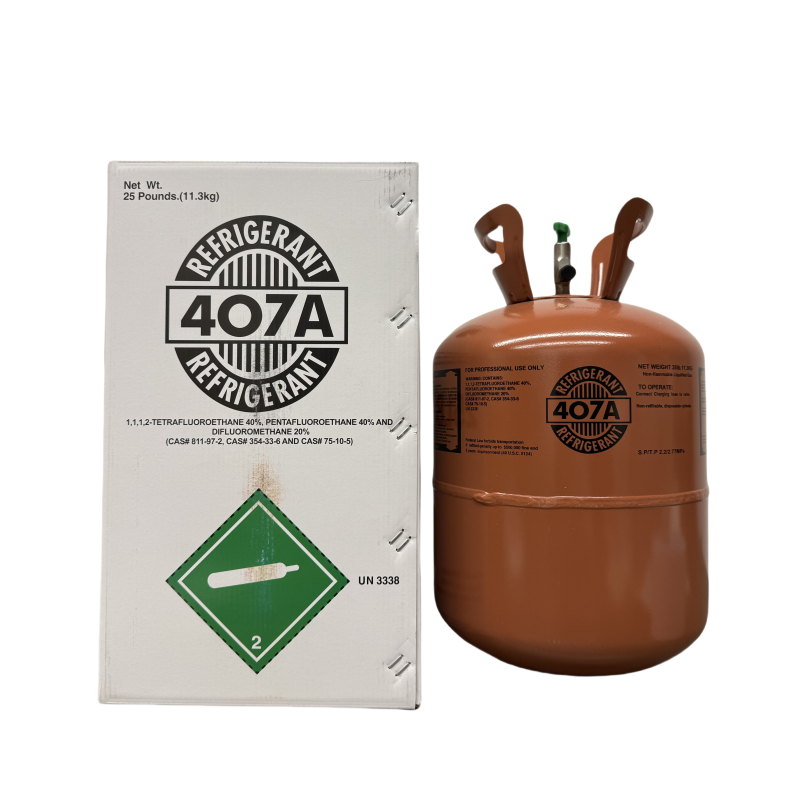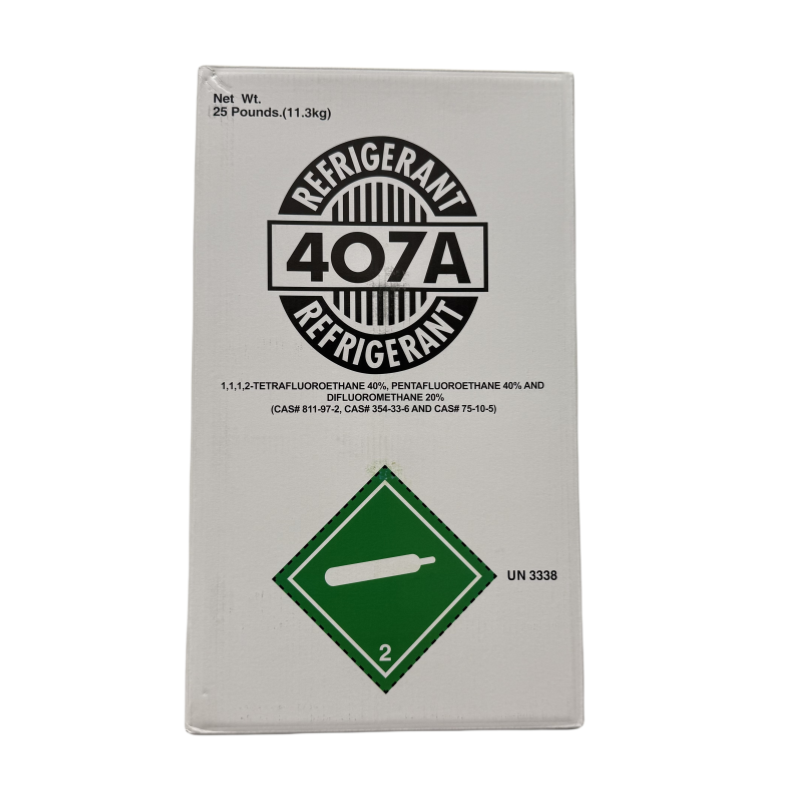Introduction: Why R407A Refrigerant Is a Modern Alternative to R-404A Refrigerant
As the refrigeration industry moves away from high-GWP refrigerants like R-404A, R-407A Refrigerant has emerged as a popular alternative. Designed for medium to low temperature applications, R-407A Refrigerant balances environmental responsibility with performance — making it a viable solution in a phase-down world.
In this guide, we’ll explore:
✔ Chemical composition & environmental impact
✔ Application advantages & limitations
✔ Ideal use cases
✔ Compatibility, servicing, and safety
✔ Future outlook
1. What Is R407A Refrigerant? (Composition & Environmental Impact)
A. Chemical Makeup
R407A Refrigerant is a zeotropic blend of three HFC refrigerants:
- 40% R-134a – Stability and pressure control
- 40% R-125 – Non-flammability & performance
- 20% R-32 – Efficiency enhancer
This combination provides a cooling performance similar to R-404A but with a lower Global Warming Potential (GWP).
B. Environmental Impact
- ODP (Ozone Depletion Potential): 0
- GWP: ~2107 (about 50% lower than R-404A’s 3922)
- Flammability: Non-flammable (A1 classification)
Key takeaway:
✅ No ozone depletion
⚠ Lower but still significant GWP — regulations may affect long-term use
2. Performance and Applications
A. Ideal Use Cases
R-407A Refrigerant is commonly used in:
- Supermarkets (refrigerated display cabinets)
- Cold storage and food processing plants
- Transport refrigeration systems
- Ice machines, walk-in freezers
B. Key Performance Traits
- Comparable capacity to R-404A
- Lower compressor discharge temperature
- Slightly improved energy efficiency
- Requires system tuning for maximum performance
3. R-407A Refrigerant vs Other Refrigerants
| Property | R-407A | R-404A | R-407F | R-448A |
|---|---|---|---|---|
| GWP | ~2107 | 3922 | ~1824 | ~1387 |
| ODP | 0 | 0 | 0 | 0 |
| Flammability | A1 | A1 | A1 | A1 |
| Retrofit Option | Partial | Baseline | Partial | Partial |
| Efficiency | Similar | Baseline | Better | Better |
Takeaway:
✔ R-407A is often used as a drop-in or retrofit for R-404A
✔ Lower GWP than R-404A, but higher than R-448A or R-32 blends
4. System Compatibility & Servicing
- Oil type: Requires POE (Polyolester) oil
- Charge method: Always charge as a liquid, not vapor
-
Retrofit notes:
- Compatible with many R-404A system components
- May require new TXVs or fine-tuning
- Conduct full leak checks – HFCs must be tightly sealed
5. The Future of R-407A Refrigerant : Transitional or Long-Term?
- R-407A is not banned in most countries — but it is being monitored under HFC phase-down regulations
- Better for interim use where R-404A is being phased out
- Long-term solutions include R-448A, R-449A, or natural refrigerants (e.g., R-290, CO₂)
Conclusion:
✅ A good bridge refrigerant
⚠ Still subject to long-term regulation
💡 Use it to phase out R-404A while planning for low-GWP future
❓ FAQs About R-407A Refrigerant
Q: Can I use R-407A Refrigerant in my existing R-404A system?
A: Yes, with some modifications. It’s often used as a retrofit, but adjustments like TXV changes may be required.
Q: Is R-407A Refrigerant flammable?
A: No. It is classified as A1 — non-toxic, non-flammable.
Q: Will R-407A Refrigerant be banned?
A: Not immediately, but it may face future restrictions due to its GWP (~2107). Lower-GWP alternatives are encouraged.








